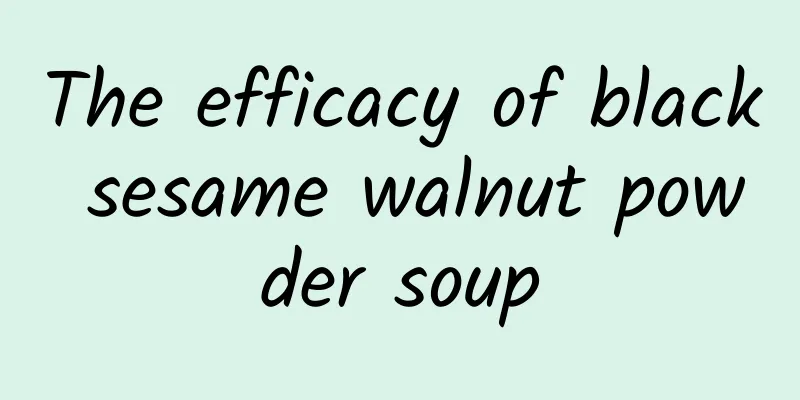Tomato bacterial wilt symptoms and prevention

|
What should we do if tomatoes have bacterial wilt? It will greatly affect the growth of tomatoes. Here we will tell you how to prevent and treat tomato bacterial wilt. Tomato Bacterial Wilt Symptoms and DiagnosisThe symptoms of damage are not obvious in the seedling stage of the affected plants. After the plants bloom, the diseased plants begin to show symptoms of damage. The color of the leaves becomes lighter and they wilt. The wilting of the leaves starts from the upper leaves, followed by the lower leaves, and finally the middle leaves. At the beginning of the disease, the leaves wilt at noon, and return to normal in the evening and morning. After repeated occurrences, the wilting intensifies and finally dies, but the plant remains green. The cortex of the middle and lower parts of the diseased stems is rough, and adventitious roots and adventitious buds often grow. The vascular bundles of the diseased stems turn dark brown, but the roots of the diseased plants are normal. After cutting the diseased stems horizontally, soak them in clean water or squeeze the incision with your hands, and milky white mucus will overflow (pus from the pathogen). Characteristics of tomato bacterial wiltThe disease is caused by infection by the bacterium Pseudomanas solanacearum Smith. It harms a variety of crops such as tomatoes, eggplants, peppers, potatoes, and ginger. The pathogenic bacteria mainly overwinters in the field or on potato tubers with diseased remains. When there is no host, the pathogen can live in the soil as a saprophytic organism for up to 14 months, becoming the main source of initial infection for the disease. The bacteria are mainly spread through rainwater, irrigation water, and agricultural tools. Diseased potato tubers and contaminated fertilizers can also carry the bacteria. The pathogen invades through wounds at the root or base of the stem, and expands in the vascular tissue of the plant, causing duct blockage and cell poisoning. The pathogen prefers high temperature, high humidity, and slightly acidic environment. The most suitable climate conditions for the disease are 30-37℃ and the most suitable pH value is 6.6. When the soil moisture content exceeds 25%, the plant grows poorly, and the disease is more severe after long rain or heavy rain. The main peak period of disease in Zhejiang and the middle and lower reaches of the Yangtze River is from June to October. The susceptible growth period of tomatoes is the middle and late stages of tomato fruiting. The disease is more serious in fields with continuous cropping, poor drainage, poor ventilation, acidic soil, calcium and phosphorus deficiency, extensive management, and high field humidity. The disease is more serious in years with heavy rains during the plum rain season and high temperatures and heavy rains in summer and autumn. Tomato bacterial wilt prevention and control methods1. Prevention: A. Dilute Orlik Qingkulike 600 times, 3 liters per square meter, and water the seedbed before or after sowing and before planting. B. At the time of transplanting or after transplanting and before the expected outbreak of the disease, dilute Orlik Qingkulike to 600 times and irrigate the roots. Use the medicine once every 7 days. The number of times of use depends on the disease condition. 2. Treatment: A. Dilution ratio: Orlike Qingkulike should be diluted 500 times before use. When the disease is serious, the dosage can be appropriately increased. B. Medication method: irrigate the roots of the diseased plants and the plants within 2-3 meters around the diseased plants or irrigate a small area; if the pathogen also harms the aboveground parts, spray the aboveground parts while irrigating the roots, and use the medicine once every 5 days. Choose disease-resistant varieties and disinfect the seeds; strictly disinfect the soil or other cultivation substrates; in the early stage of the disease, spray 200 mg/L of streptomycin sulfate, or spray 500 times of 30℅DT wettable powder, or 4000 times of streptomycin sulfate for root irrigation (use 300 grams of liquid per plant, irrigate the roots once every 10 days, and irrigate 2-3 times in a row). I hope it helps you. |
<<: How to grow tomatoes How to grow tomatoes
>>: Processing of tomato powder
Recommend
What is Diamond Aircraft? Diamond Aircraft Reviews and Website Information
What is Diamond Aircraft Industries? Diamond Aircr...
What fruits should we eat in winter? What fruits are ripe in winter?
Winter is cold and dry, so people like to eat mor...
The benefits of drinking black date vinegar
Black date vinegar is a health drink that has man...
How is the Chinese Embassy in Romania? Reviews and website information of the Chinese Embassy in Romania
What is the website of the Chinese Embassy in Roma...
The efficacy and function of Kunlun snow chrysanthemum The efficacy and function of Xinjiang snow chrysanthemum
Kunlun snow chrysanthemum and Xinjiang snow chrys...
How long is the shelf life of edible butter?
Nowadays, people like to eat Western food very mu...
How is Mango? Mango reviews and website information
What is Mango? Mango is a famous low-cost airline ...
How to make jujube kernel and jujube peel porridge
How much do you know about the method of making ju...
Nutritional value and cooking methods of Emperor's Vegetable
Some people may not know what kind of dish it is ...
Alternative uses of grapefruit peel What are the uses of grapefruit peel
Pomelo is a common fruit. Both its flesh and peel...
The efficacy and function of black rice pumpkin porridge
Black rice and pumpkin porridge is a special porr...
How is Holy Cross College? Holy Cross College reviews and website information
What is the website of College of the Holy Cross? ...
What are the benefits of eating apples?
Apple is a good health fruit and has many medicin...
How to eat pomegranates Tips on eating pomegranates
Pomegranate is a nutritious fruit with an attract...
What is "Indian Film Audience" like? "Indian Film Audience" review and website information
What is Filmfare? Filmfare is an Indian magazine j...









